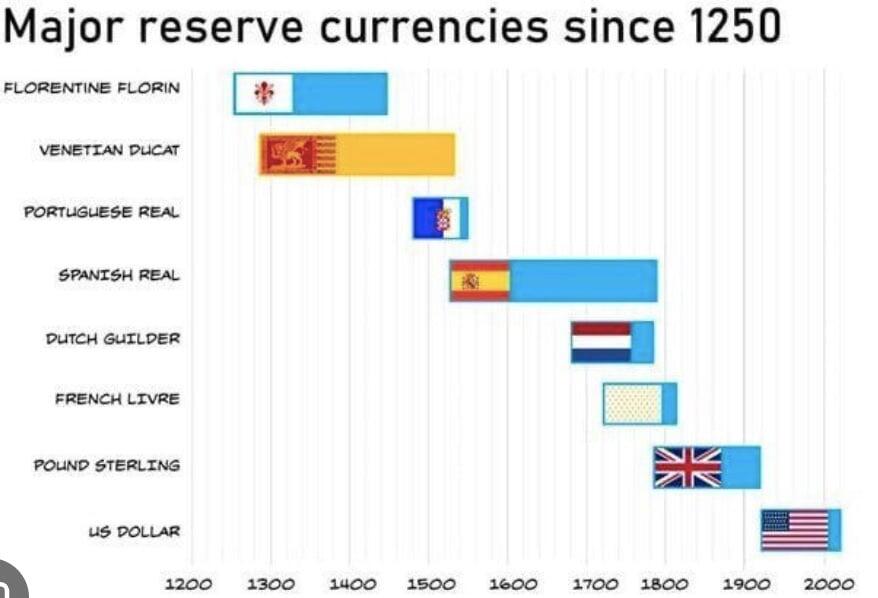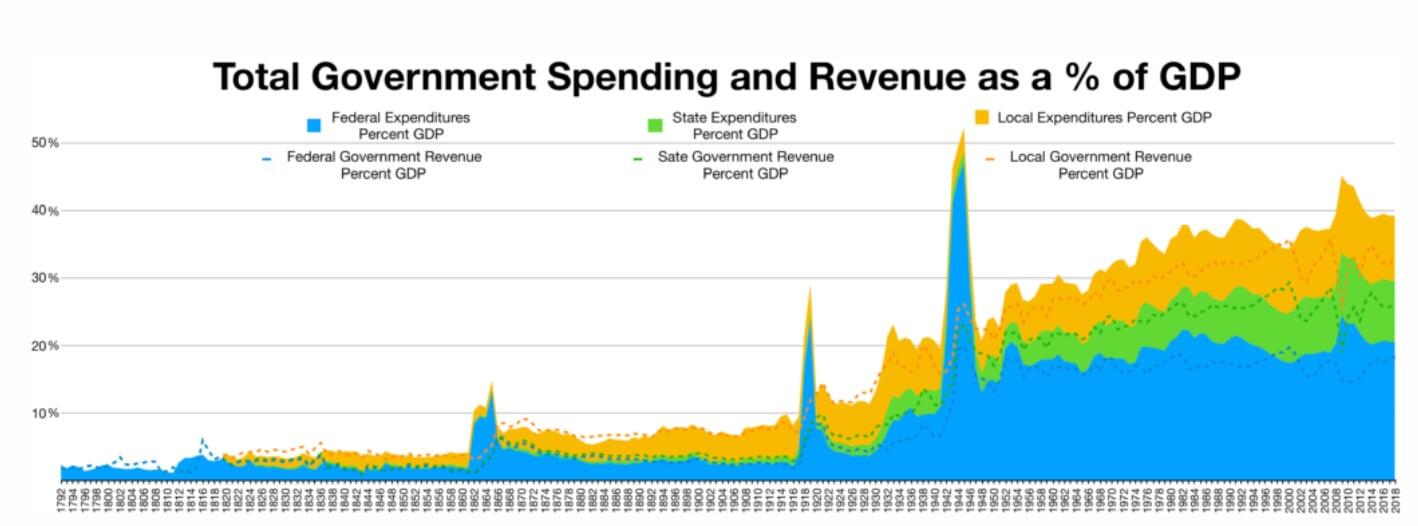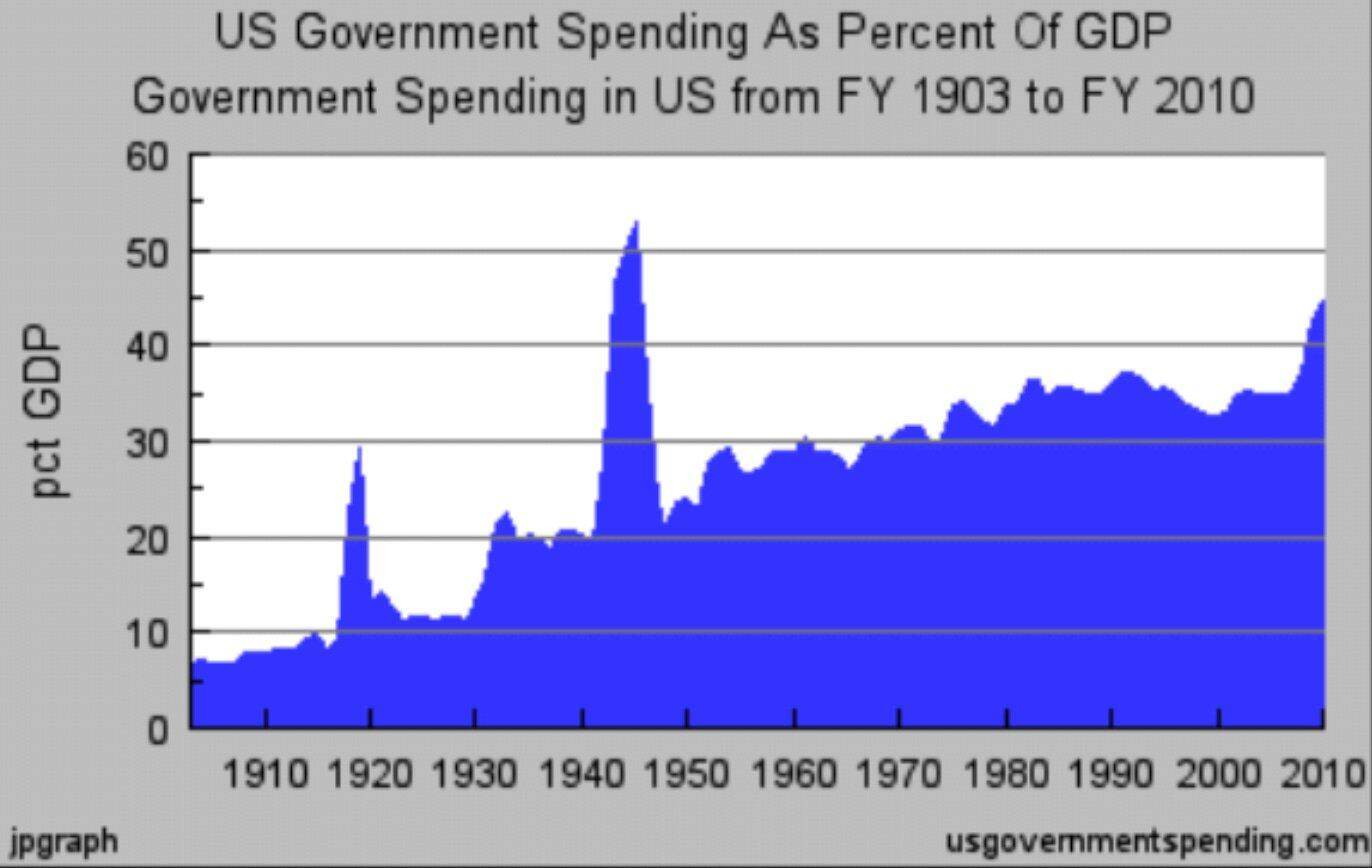Can we save the dollar before central banking kills it?
Our deficits are now stuck at 8% of GDP — unprecedented in peacetime. And our national debt just hit $35 trillion — unprecedented in the history of man.
Even the central bankers realize that this isn't sustainable. That we are coming to the day our paper money utopia crumbles.
Historically, from Song Dynasty China to Weimar Germany, when paper dies we return to hard money. Because backing the dollar with hard money like gold -- and eventually Bitcoin -- is the only way to finally kill the money printer.
Happily, we can actually do this without the crash.
When paper money dies
The other day Charles Payne sent me a quote by 1970s Fed Chair Paul Volcker who wrote, paraphrasing:
“It is a sobering fact that central banking has led to more inflation, not less. We did better with the 19th-century gold standard, with passive central banks, with currency boards, or even with ‘free banking’. The power of a central bank, after all, is the power to create money and, ultimately, the power to create is the power to destroy.”
This is a fairly striking admission of failure from -- by all accounts -- the best Fed Chair we've had since Wall Street forced the Fed on us in 1913.
A central bank is indeed an extraordinary thing: it’s a privately-owned, federally-licensed counterfeiter the regime can use to seize literally everything in the world by printing money.
It’s why we have inflation and recessions.
It’s why we have Wall Street bailouts and a colossal national debt.
It's why the government has grown to dominate our economy and our lives.
In contrast, under the gold standard, we had zero cumulative inflation over 124 years.
We had a federal government that was 7 times smaller as a percent of GDP.
In 1913 we had a national debt of 8% of GDP. Today, it’s 140% -- in fact, it's rising by almost 8% per year.
How we get back to Gold
Lady Liberty Gold 1 Troy Oz Round - .9999 Pure
Price & Buy
So how do we get back?
Simple: back the dollar with gold at today's price -- twenty-five hundred per ounce -- then mandate that if gold flows out the Treasury has to buy it back in before it does anything else -- before it pays Ukraine before it pays interest on the national debt.
Presto.
Why? Because if they keep printing money it creates inflation and gold goes to, say, twenty-six hundred an ounce.
At 2600 people can make free money handing 2500 to the Fed for an ounce of gold and turning around and selling that ounce for 2600.
Gold flows out. And now the Treasury has to buy it in at 2600.
In other words, they lose money on the money printer: they give it away for 25 and buy it at 26.
Inflation in a Gold standard
That means that, under a gold standard, the Fed and Treasury are forced to keep money creation low enough for zero percent inflation -- for stable gold.
In practice, that would mean they can’t print more than gold demand — roughly the same as GDP. Which is about a trillion less per year compared to today.
On the ground, this means interest rates above inflation -- no more paying hedge funds to borrow.
It means no more quantitative easing to buy up rich people's assets leaving inflation for the poors.
It means no more Wall Street bailouts.
And, above all, it chokes off the spending cancer of the welfare-warfare industrial complex.
It could even include ending or reducing fractional-reserve banking -- where banks lend out money they don't have -- by tightening long-standing reserve requirements so banks don't inflate and they don't crash in the first place.
Neither the gold standard nor full reserve banking are remotely on the bingo card for the foreseeable future. And, historically, it takes a crisis to put them there.
But it's important to remember how easy it is to solve our financial catastrophe if and when we get a politician brave enough to try.
Money Metals Exchange and its staff do not act as personal investment advisors for any specific individual. Nor do we advocate the purchase or sale of any regulated security listed on any exchange for any specific individual. Readers and customers should be aware that, although our track record is excellent, investment markets have inherent risks and there can be no guarantee of future profits. Likewise, our past performance does not assure the same future. You are responsible for your investment decisions, and they should be made in consultation with your own advisors. By purchasing through Money Metals, you understand our company not responsible for any losses caused by your investment decisions, nor do we have any claim to any market gains you may enjoy. This Website is provided “as is,” and Money Metals disclaims all warranties (express or implied) and any and all responsibility or liability for the accuracy, legality, reliability, or availability of any content on the Website.
Recommended Content
Editors’ Picks
EUR/USD pulls away from daily lows, stays below 1.1000

EUR/USD stages a modest rebound from the daily low it set at 1.0950 on upbeat US data releases but remains below 1.1000 in the American session. The improving risk mood limits the US Dollar's gains and helps the pair find support.
GBP/USD rebounds to 1.2850 on improving risk mood

GBP/USD regains its traction and trades marginally higher on the day near 1.2850. Although the pair came under bearish pressure after strong US data releases, it managed to reverse its direction with risk flows starting to dominate the action in financial markets.
Gold climbs above $2,450 despite rising US yields

Gold trades in positive territory above $2,450 in the American session on Thursday after dropping toward $2,430 with the immediate reaction to the stronger-than-forecast US data. The benchmark 10-year US yield is up more than 2% on the day above 3.9%, capping XAU/USD's upside.
AAVE price eyes for rally after retest of support level

Aave (AAVE) price trades slightly higher during the Asian trading session on Thursday after surging on Wednesday. On-chain data shows that open interest, daily active addresses and development activity are rising, signaling a bullish trend.
Fed rate cut in September? The data will decide

The US economy is currently navigating a period of slowing growth, persistent inflation, and a tight labour market. The Fed's aggressive monetary policy tightening over the past year has started to show results in moderating inflation




